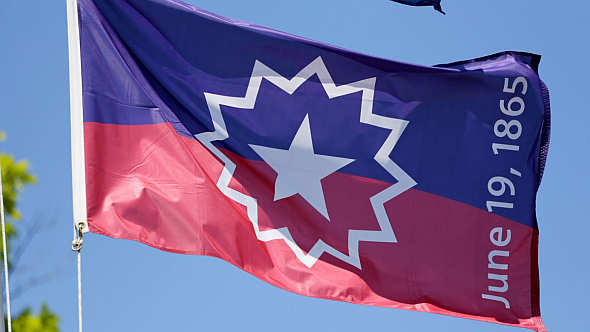First celebrated in Galveston, Texas, on June 19, 1865, Juneteenth (also known as Emancipation Day, Freedom Day, or Jubilee Day) celebrates the freedom of enslaved people following the U.S. Civil War—and two years after President Abraham Lincoln issued the Emancipation Proclamation.
The holiday has been celebrated by African American communities throughout the country for the past 157 years. From rodeos and parades to community fairs and celebrating with red foods and beverages, Juneteenth celebrations come in many forms.
One of the most enduring emblems commemorating the day that tens of thousands of enslaved people in Galveston first learned that they were free is the Juneteenth flag. The colors and symbols emblazoned on the flag have deep meaning that transcend aesthetics.
Ben Haith, the founder of the National Juneteenth Celebration Foundation (NJCF), created the Juneteenth flag in 1997 in collaboration with Verlene Hines, Azim, and Eliot Des. Their work subsequently cemented the holiday in the minds of all Americans and solidified the flag as an undying symbol of liberty and freedom for African Americans.

